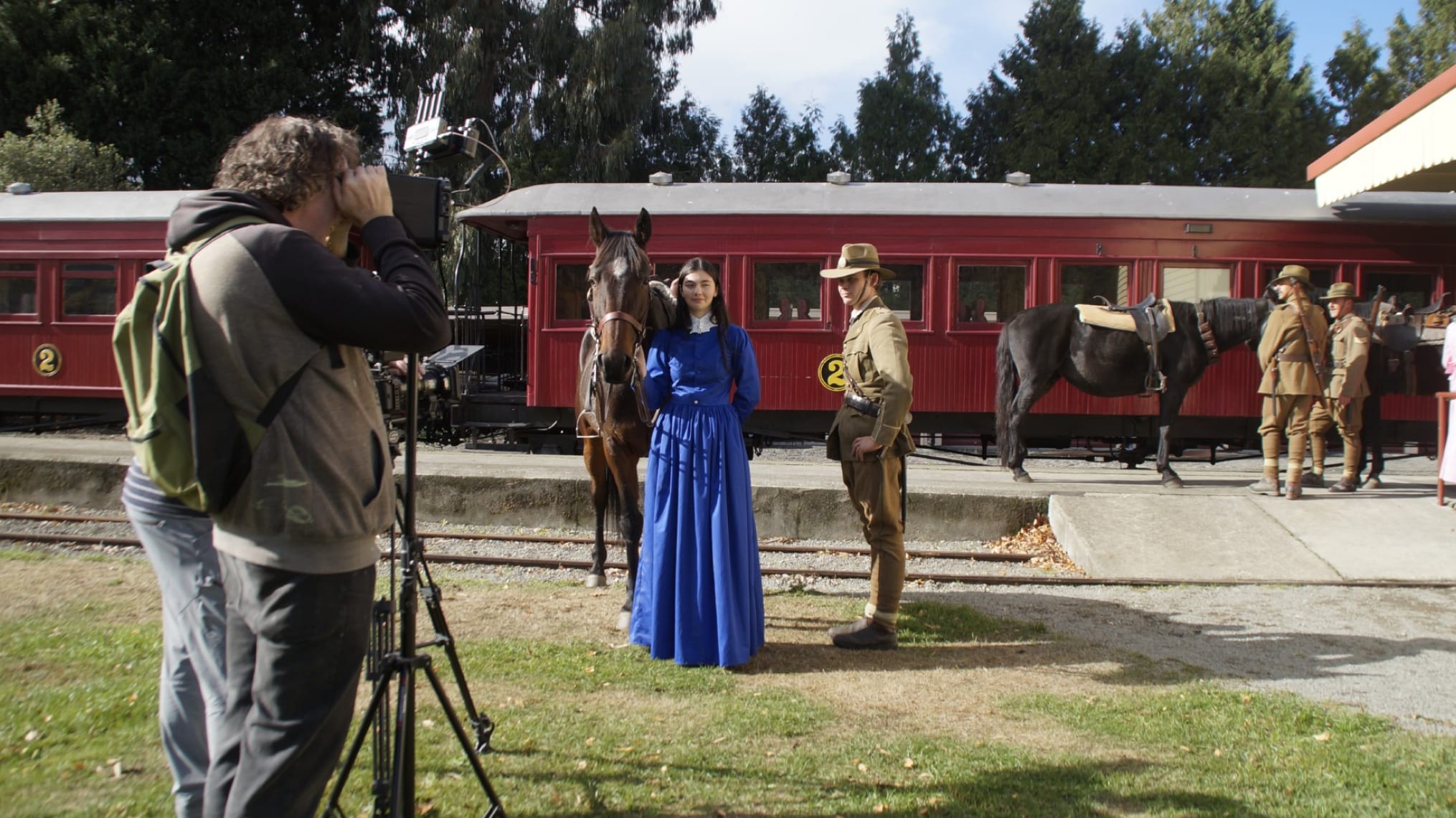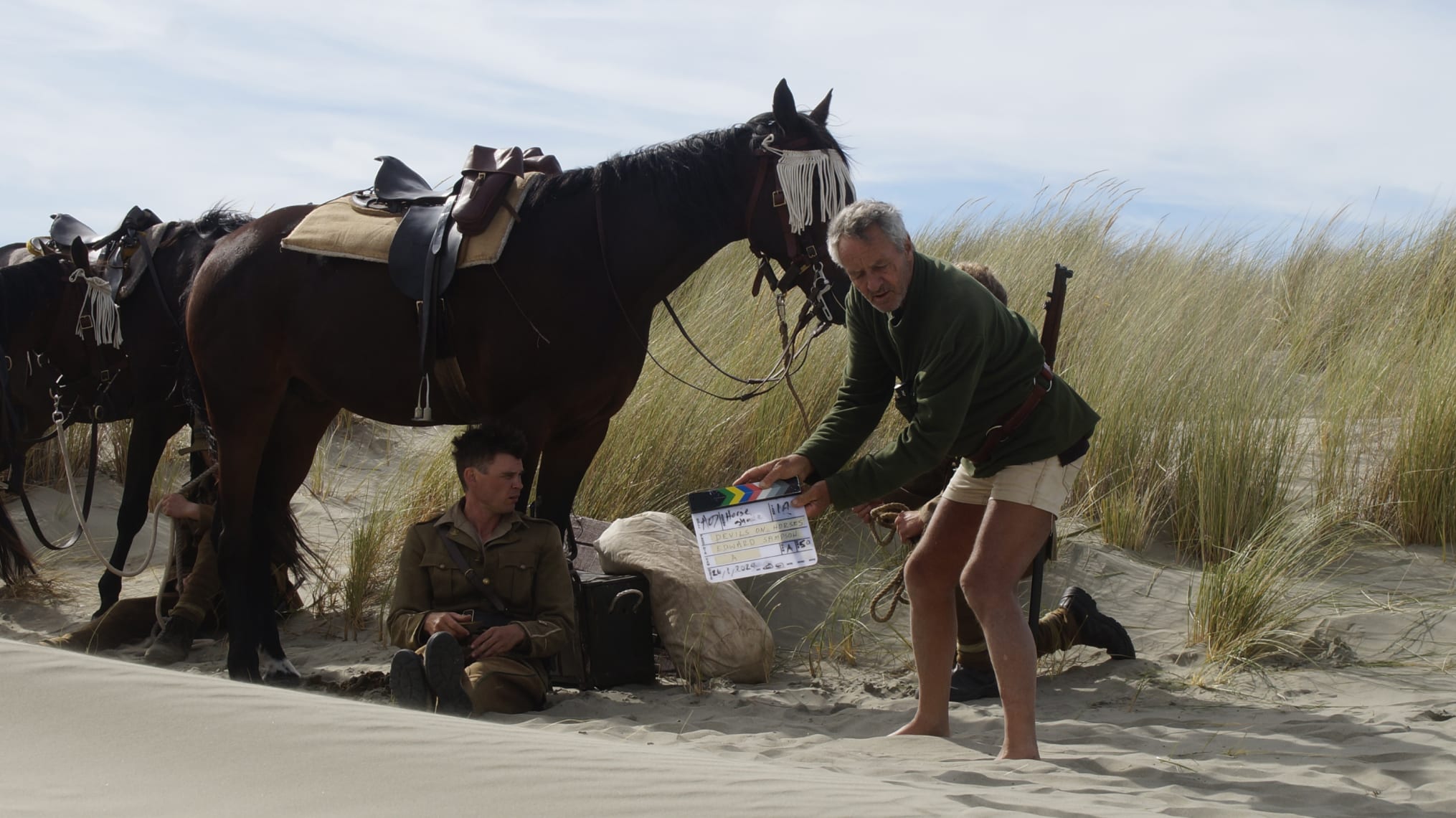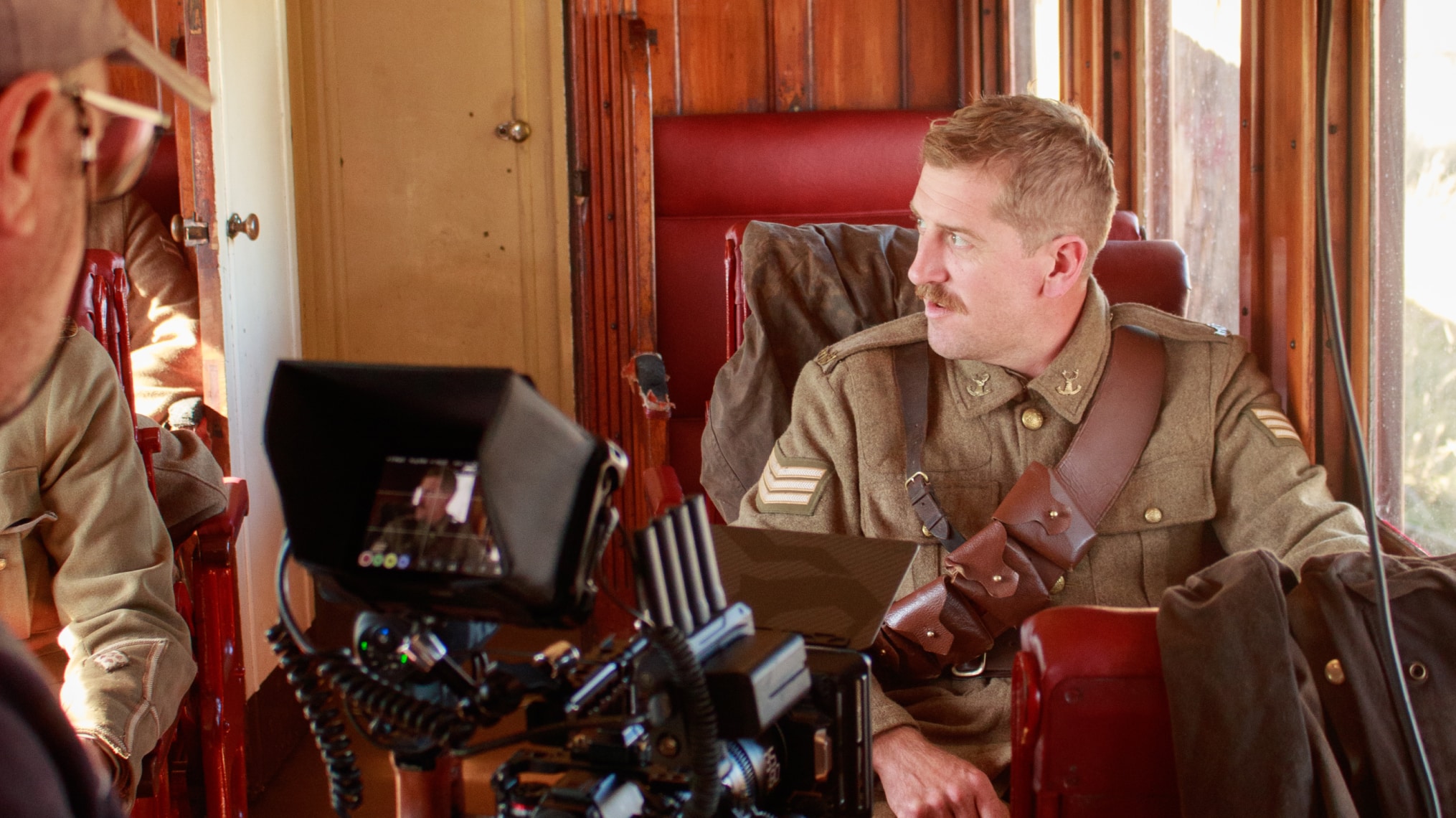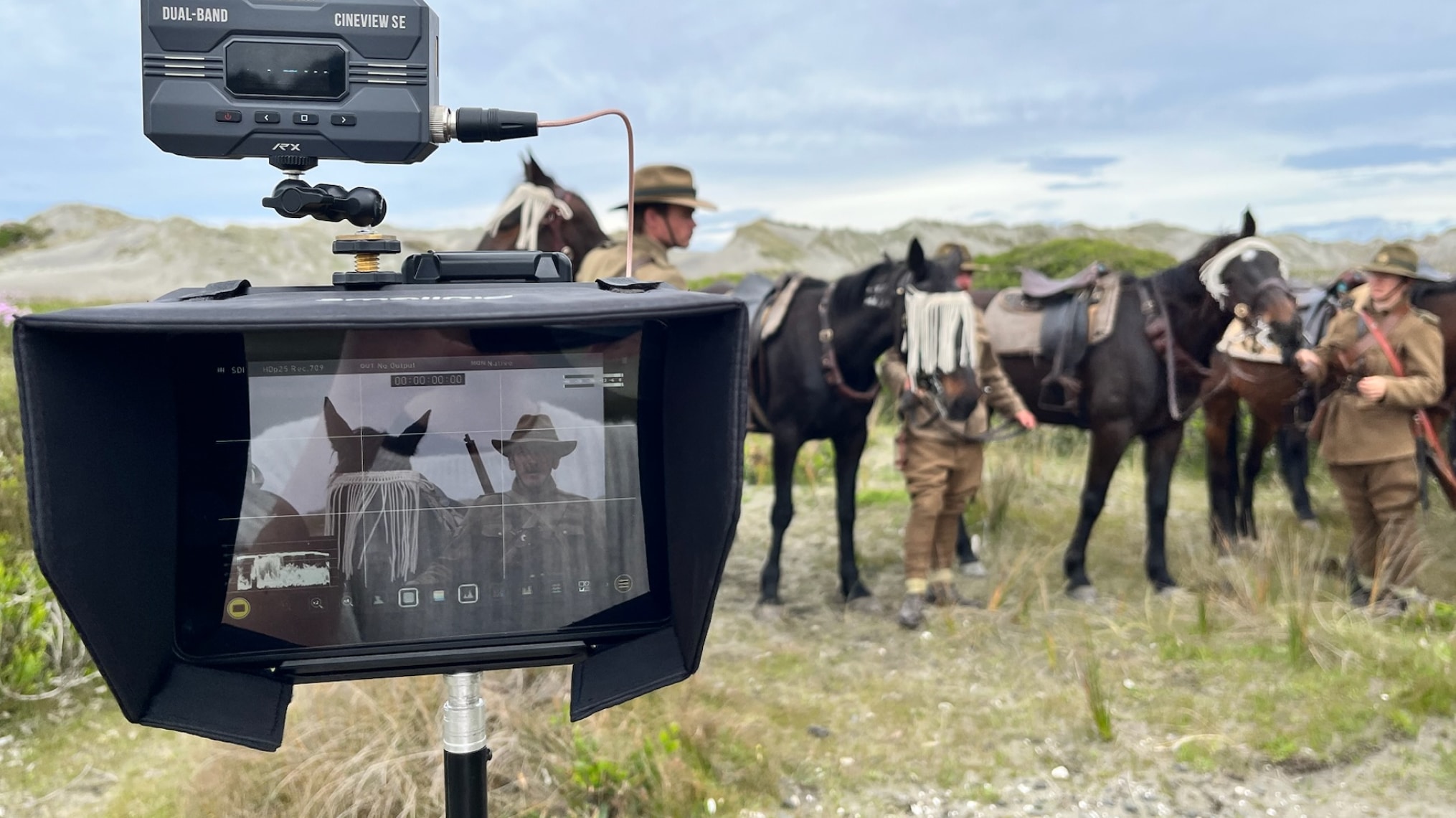Devils on Horses reveals the profound bond between soldiers and their horses during World War One. Filmed primarily in Canterbury, on New Zealand’s South Island, the documentary illustrates how these animals provided comfort, security, and emotional support amid the trauma of combat in the desert, using reenactments, archival footage, and interviews to tell its story. The film also sheds light on the mental health struggles soldiers face when returning home.
For producer Edward Sampson and his team, the process of creating the documentary has been lengthy but rewarding. During the film’s development stages in 2019, the team could not have foreseen the impact of the COVID pandemic, which delayed production. “Every film comes with unique challenges, and overcoming them is part of the journey,” reflects Sampson. Despite this setback, Sampson speaks fondly of the experience. “We’ve had the privilege of meeting incredible people who have wholeheartedly supported the project,” he shares.



